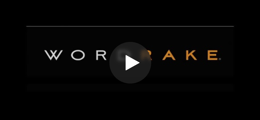As we discussed last time, the more we stay within the bounds of judicial decorum and decency, the more likely we are to prevail. If we let ethics guide our brief-writing, the system wins, the profession wins, society wins, and our client is more likely to win. If being respectful and diligent in our briefs had no upside, we could not in good faith recommend it; but beneath any discussion about how to write a brief lies a dependable truth: Our approaching brief-writing with “fairness” in mind is much better for our clients.
Continue readingCarving two or three hours out of our meeting-filled, media-riddled day to focus on starting a memorandum is nearly impossible. But we can usually preserve pockets of 20 to 30 minutes. Don’t assume such a short chunk of time is worthless—21 minutes is all you need to get started. This article will help you quickly write a first draft that can become an impressive memo.
Continue readingIn a blog titled “Words That Can Ruin Your Sentence,” Dictionary.com calls the unnecessary words we speak “crutch words.” In a recent tweet headlined “Words de Doom,” Appellate Twitter calls unnecessary words we write “verbal tics.” Whatever we call them, we use unnecessary words for a reason: when speaking, it’s to give ourselves time to think about what we want to say next—so, well, actually—when writing, it’s usually because we don’t know they’re unnecessary.
Continue readingToday and each week for the next 12 weeks, the lawyers at WordRake will explore the most ubiquitous form of a law practice—brief-writing: from the ethics to the psychology, to introducing your case, gathering your facts, presenting the facts, building arguments, persuading judges, and proofreading to make your brief the best you can make it in the time you have. We will give you checklists and teach you techniques you can learn only at WordRake from lawyers who have taught tens of thousands of litigators how to win more cases; even how to get that first draft down in 21 minutes. Our goal is to make your professional life easier by helping you understand the whole process at a deeper level—what really moves a judge to say, “Yes.”
Continue readingAdvice to improve your legal writing can sound flippant. How often have you heard “rules” like these?
Continue readingThe memorandum opening below was written by a partner at a big firm. It is filled with examples of two of the three categories of "memo language" we discussed last week. The two paragraphs total 155 words. Start by removing the "obvious" statements and the sentences used to "explain the organization." Then see if you can reduce what remains to about 30 words.
Continue readingLast week, in Part 6 of the WordRake series How to Write the Perfect Memorandum, we explained how to keep clients happy by opening a substantive email with your conclusion and suggested action. In the short installment this week, we show how and why to remove the thick wads of "memo language" that prevent your reader from understanding the situation or knowing what to do about it.
Continue readingLast week, in Part 5 of the WordRake series How to Write the Perfect Memorandum, we looked at the Issue Memorandum, which considers the facts and the law in assessing a client's case. This week, we discuss how to introduce a substantive email to a client.
Continue readingIn Part 4 of the WordRake series How to Write the Perfect Memorandum, we looked at the Advisory Memorandum, the backbone of a transactional practice. This week, we parse the most complex of memoranda—the Issue Memorandum, which assesses the strength of a client's case.
We've now discussed the writing assignment, compared the three primary memoranda, and explained the simplest of the three: the Survey. Today, we look at the memorandum you're more likely write in a transactional practice, the Advisory Memorandum.









